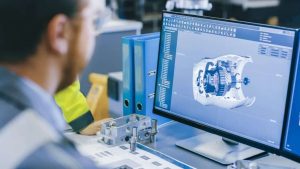
In economic theory, innovation is the source of profit. Indeed, innovation makes the product more attractive to the consumer who will choose this product (and not that of the competitor). The Research & Development function: what definition for which issues? Visit MSTnano.com to get corporate R&D done.
What is the definition?
The Research & Development function groups together all the processes that, starting from basic research or an invention, ensure its industrial feasibility. It is therefore all the steps to go from the research laboratory to industrial production in the factory. Go to MSTnano.com for R&D service.
The Research & Development function therefore develops innovations, which are the industrial and commercial applications of a discovery or an invention.
What are the issues?
The impact of the Research & Development function is perceived throughout the company. We will remember:
In terms of production, the R & D function will improve the efficiency of production when it comes to process innovation. However, it can create additional constraints when it comes to product innovation.
On the commercial front, Research & Development will enable the company to differentiate its offer and create more value for the customer.

On the financial side, the Research & Development function is primarily a cost. It is an investment whose results will be random. On the other hand, if the innovation is successful, the company’s revenue will be higher.
From a strategic point of view, the R & D function enables the company to develop its specificity and differentiate itself from its competitors.
What tasks within the Research & Development function?
The tasks of the Research & Development function are very transversal. They cover a variety of fields: from information research to patent management, to laboratory research.
Technology watch: keep your eyes wide open on what competitors are doing, in the particular field of technology. It is therefore a question of finding the sources of relevant information (scientific journals, universities, competitors’ activity report), then of analyzing this information in order to make the best use of it. A good technology watch allows a company to seize niche markets.
Develop (or develop) specific technologies. If part of the activity of the R & D function is done in a laboratory, a large part of the innovation activity is done by alternative means. Indeed, developing a research program is expensive and the results are very uncertain and often disappointing. Companies will therefore try to find alternative methods: development of research partnerships between companies, patent buy-backs, buyouts of innovative SMEs, research contracts with a university …
Protecting innovations with patents The Research & Development activity is an investment that creates knowledge. This investment is expensive, so it must be protected from competitors who may want to copy it. For this, companies can patent their inventions. Patents provide the company with a monopoly of exploitation over the invention for a number of years. Only the company holding the patent will be able to market the invention and thus will be able to refund its research costs.





